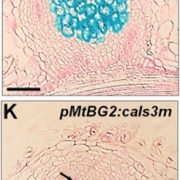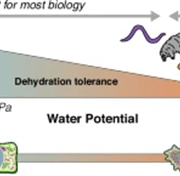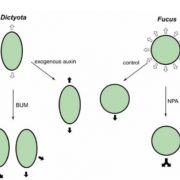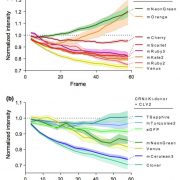Cells are larger than life when ExPOSEd
 Cells are as small as life gets, but can be much larger than they appear if given room for expansion. This is possible with expansion microscopy, a technique that enables three dimensional cell imaging by physically expanding cellular components for visualization. Although expansion microscopy has been used in several eukaryotic systems, it is only recently being extended to plant cells, which present challenges due to their cell walls. To address this problem, Cox et al. introduce ExPOSE, an expansion microscopy technique that has been optimized for plant protoplasts – cells without cell walls. The cell wall of maize and Arabidopsis leaf cells were enzymatically digested to isolate protoplasts which were then fixed, treated with a protein-binding anchor, and embedded in a swellable hydrogel overnight. This process resulted in an average physical expansion of more than 10-fold. With the cell physically zoomed in, nothing stays hidden. ExPOSE allows high-resolution visualization of cell components such as protein localization within mitochondrial matrices which are normally invisible in unexpanded cells. The authors also used ExPOSE to observe DNA architecture, detect individual mRNA foci, resolve the spatial resolution of tightly packed proteins, and capture subtle co-localization changes – all using a standard confocal microscope. Perhaps one of ExPOSE’s standout advantages is its application in studying biomolecular condensates, a use not previously reported with expansion microscopy. If single cell study is the target, then there’s room for expansion with ExPOSE. (Summary by Irene I. Ikiriko @ireneikiriko) Plant J. 10.1111/tpj.70049
Cells are as small as life gets, but can be much larger than they appear if given room for expansion. This is possible with expansion microscopy, a technique that enables three dimensional cell imaging by physically expanding cellular components for visualization. Although expansion microscopy has been used in several eukaryotic systems, it is only recently being extended to plant cells, which present challenges due to their cell walls. To address this problem, Cox et al. introduce ExPOSE, an expansion microscopy technique that has been optimized for plant protoplasts – cells without cell walls. The cell wall of maize and Arabidopsis leaf cells were enzymatically digested to isolate protoplasts which were then fixed, treated with a protein-binding anchor, and embedded in a swellable hydrogel overnight. This process resulted in an average physical expansion of more than 10-fold. With the cell physically zoomed in, nothing stays hidden. ExPOSE allows high-resolution visualization of cell components such as protein localization within mitochondrial matrices which are normally invisible in unexpanded cells. The authors also used ExPOSE to observe DNA architecture, detect individual mRNA foci, resolve the spatial resolution of tightly packed proteins, and capture subtle co-localization changes – all using a standard confocal microscope. Perhaps one of ExPOSE’s standout advantages is its application in studying biomolecular condensates, a use not previously reported with expansion microscopy. If single cell study is the target, then there’s room for expansion with ExPOSE. (Summary by Irene I. Ikiriko @ireneikiriko) Plant J. 10.1111/tpj.70049









